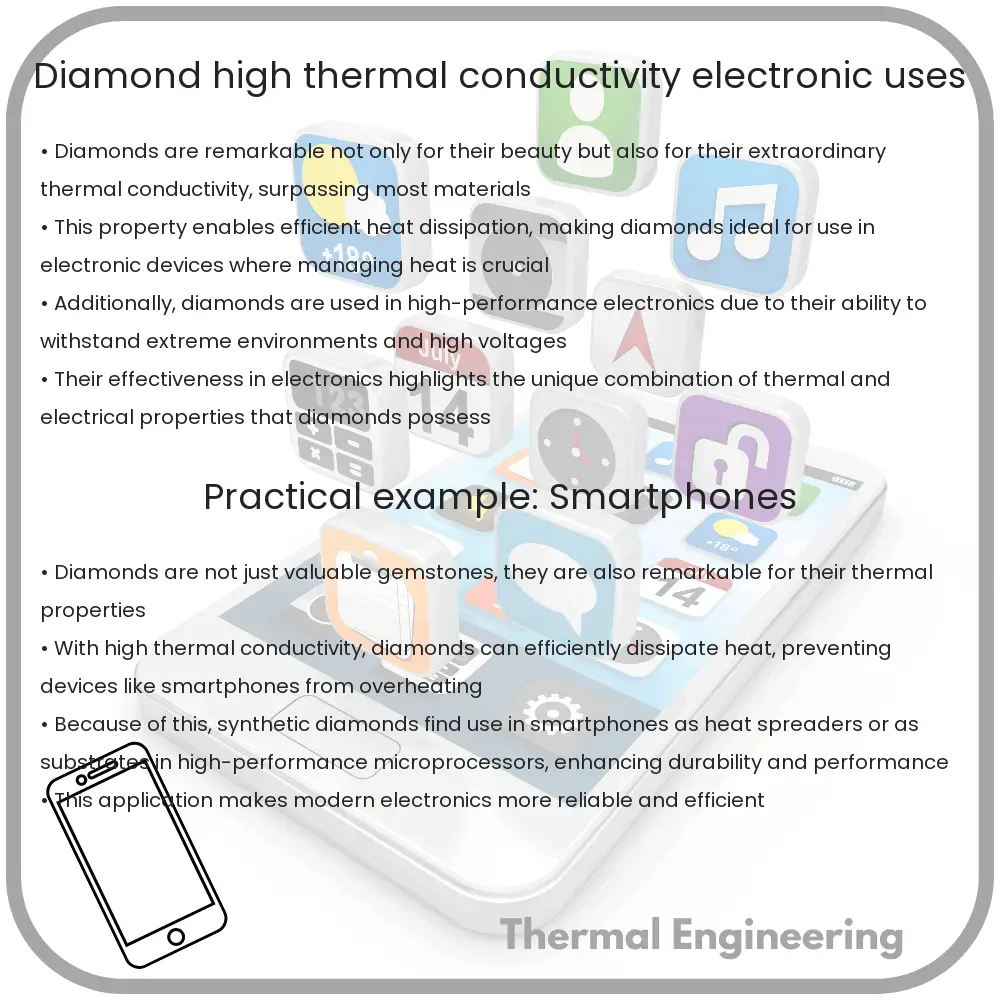Explore the properties and uses of diamond in thermal conductivity and electronics, highlighting its role in advanced applications.

Diamond: A Marvel in Thermal Conductivity and Electronic Applications
Diamond, a crystalline form of carbon, is not only renowned for its aesthetic appeal as a gemstone but also holds exceptional scientific interest due to its remarkable physical properties. Among these properties, diamond’s high thermal conductivity and potential uses in electronic devices stand out, making it a focal point in materials science and engineering research.
Understanding Thermal Conductivity in Diamond
Thermal conductivity is a measure of a material’s ability to conduct heat. Diamond exhibits the highest thermal conductivity of all known materials, reaching up to 2000 W/mK at room temperature. This extraordinary characteristic is primarily due to the strong covalent bonding between carbon atoms in the diamond lattice and the stiff lattice structure itself, which allows for rapid and efficient transfer of vibrational energy (heat) through the crystal.
- Strong Covalent Bonds: Each carbon atom in diamond is tetrahedrally bonded to four other carbon atoms, creating a robust and rigid three-dimensional network.
- Stiff Lattice Structure: The tight bonding arranges the atoms in a way that minimizes disruptions in the lattice, facilitating a smooth path for phonons (quantized modes of vibration) responsible for heat transfer.
- High Debye Temperature: Diamond’s high Debye temperature (approximately 2200 K) further enhances its ability to conduct heat, keeping phonon scattering at a minimum at room temperature.
Due to its superior thermal conductivity, diamond is highly sought after in applications where heat management is critical, such as in heat sinks and thermal spreaders used in electronic devices, lasers, and high-power transistors.
Diamond in Electronic Uses
Aside from its thermal attributes, diamond’s electronic properties are also of significant interest, particularly its wide bandgap, high breakdown voltage, high carrier mobilities, and resistance to radiation. These properties make diamond an ideal candidate for a variety of electronic applications:
- Wide Bandgap Semiconductor: Diamond has a bandgap of about 5.5 eV, making it capable of operating at much higher temperatures and power levels than silicon-based devices.
- High Breakdown Voltage: The material’s ability to withstand high voltages without breaking down makes it suitable for power devices used in high-voltage applications.
- Radiation Hardness: Diamond’s robust structure withstands radiation, a valuable characteristic for electronic devices used in space exploration, nuclear environments, and medical imaging.
Moreover, synthetic diamond production through processes such as Chemical Vapor Deposition (CVD) and High Pressure High Temperature (HPHT) synthesis has made these applications more accessible. Researchers continue to explore and enhance doping methods to better control the electrical properties of diamond, thus broadening its practical uses in electronics and optoelectronics.
Conclusion
The potent combination of unparalleled thermal conductivity and favorable electronic characteristics makes diamond a standout material in advanced engineering applications. As manufacturing techniques evolve and cost-effective production becomes more achievable, we can anticipate increased utilization of diamond-based solutions in high-tech sectors, driving forward innovations in electronics, aerospace, and beyond.